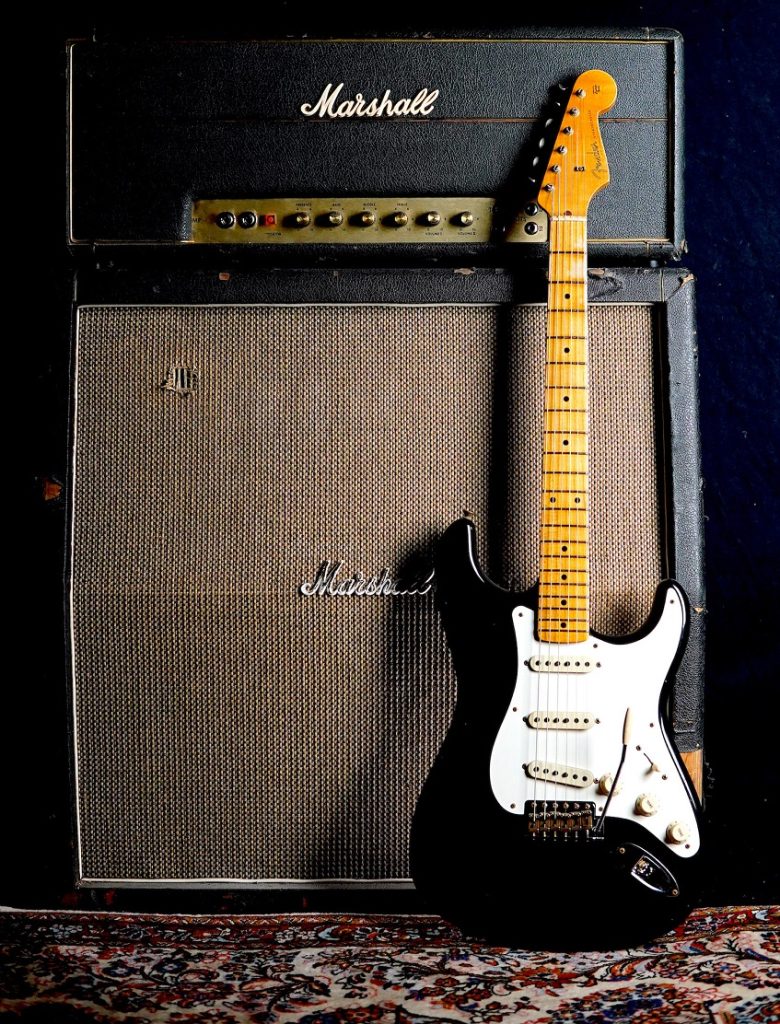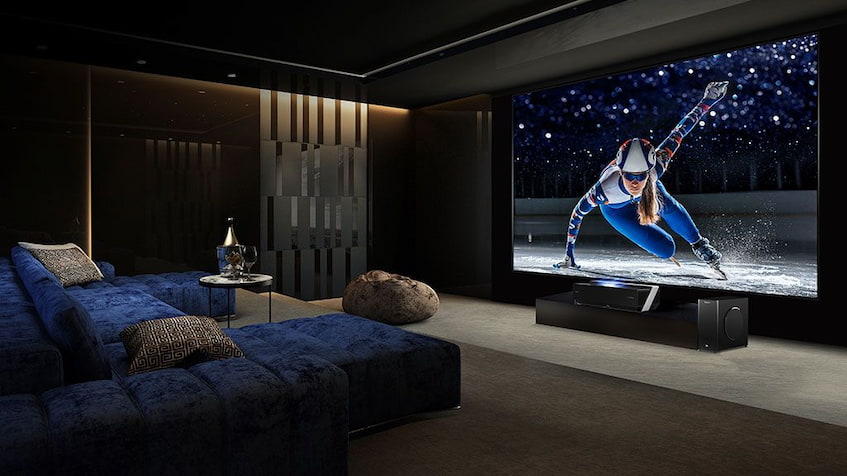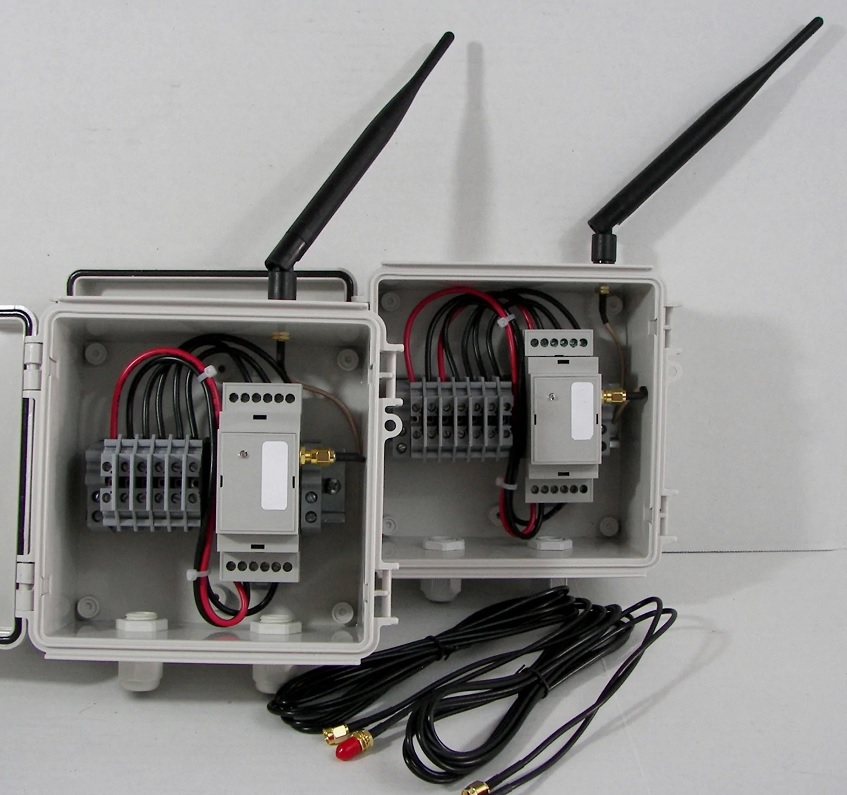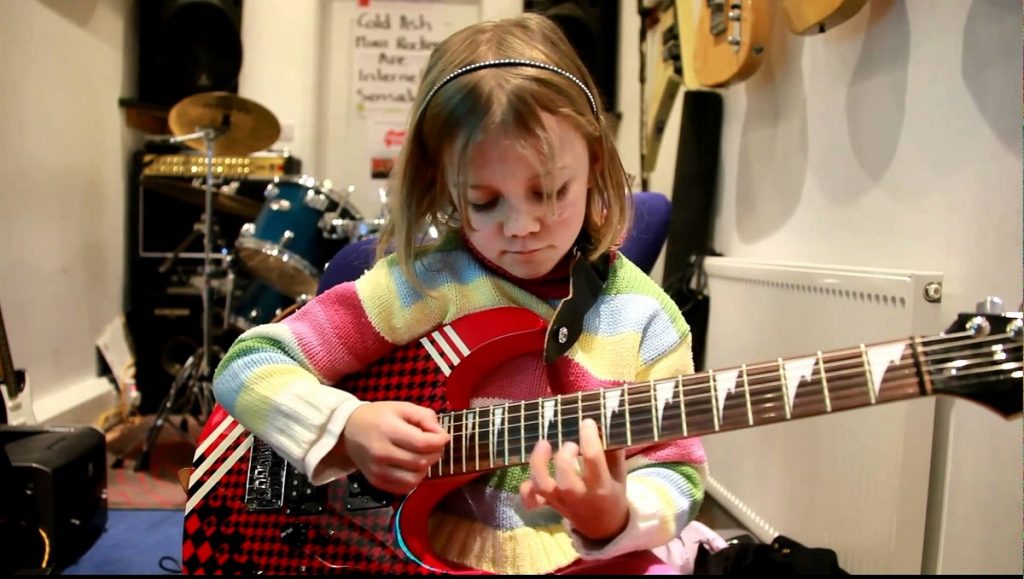Play It Safe: How to Care for Your Double Bass
Buying and playing a double bass is an exciting musical adventure. It’s also a big investment in your passion. But to make sure your double bass stands the test of time, storing it in a proper care is essential. Whether you’re committed to lifelong performances or passing down the love of music, these simple tips will help you maintain your instrument. Following these guidelines will ensure that your double bass preserves its rich, deep tones, remaining a faithful companion throughout its journey with you.
Protect with a Quality Case

Protecting your double bass with a high-quality case is essential to ensure its longevity and safety. When browsing upright bass cases online, you’ll find options that perfectly match your needs. Whether you opt for a hard or soft case, each offers distinct advantages. Hard upright bass cases offer robust protection with a sturdy outer shell, typically made of fibreglass or wood, ideal for safeguarding your double bass during travel or storage.
They provide excellent resistance against impacts and are suitable for rough handling environments. On the other hand, soft bags are lightweight and easier to carry, usually made from durable fabrics like nylon or canvas. They offer basic protection against scratches and minor bumps, making them convenient for rehearsals.
For those who frequently play gigs, a bass bag with carry handles and strong backpack straps is ideal for easy transportation. Bonus points if it has wheels! Also, prioritise a case with a lot of storage for your sheet music and accessories, making sure everything you need is always within reach. While you can’t go wrong with a classic black case, there are plenty of stylish options available if you want something that stands out.
No matter what design you choose, ensure the double bass case has foam padding to protect your instrument from impacts and is covered in a tearproof, water-resistant fabric to guard against the elements. This combination of padding and durable fabric is crucial for preventing damage from accidental drops or exposure to rain.
When storing your double bass at home, be mindful of its placement, whether it’s in a soft bag or a hard case. If you have a hard case, it’s safe to leave the double bass standing up against a wall or in a corner. However, be cautious when doing the same with a soft bag. Make sure everyone in the house knows where your double bass is kept. Despite its size, the instrument is delicate—knocks can lead to broken bridges, dislodged soundposts, and other damage.
Clean Regularly
To keep your upright bass clean, always wash your hands before playing. After each session, use a soft microfibre cloth to wipe down the body and strings, removing rosin dust and fingerprints. Regularly cleaning with a lint-free cloth helps maintain its appearance. If the fingerboard feels dry, consider oiling it to keep it in good condition. Polishing the body can enhance its look and extend its life. Avoid using aggressive cleaners and solvents, as they can damage the finish.
Maintain the Strings
Maintaining your bass strings is key to good sound and long-lasting performance. Regularly wipe them down with a soft cloth after playing to remove sweat and oils that can cause corrosion. Check your strings for any signs of damage like fraying, caked-on rosin, or a duller sound. If you notice these, it’s time for a change. Replace your strings one at a time to keep the bridge and soundpost tension consistent. Occasionally clean strings with rubbing alcohol on a cloth, avoiding the fingerboard. Well-maintained strings sound better and protect your bass from unnecessary tension and damage.
Humidity Control

Double basses are made of timber, so they’re sensitive to humidity changes. Wood expands and contracts with weather changes, which can cause cracking or loose sound posts. Think of it like a wooden door that sticks during rainy seasons. Having a humidifier in your case and using it regularly can help protect your bass by keeping it at a stable humidity level. If your bass isn’t confined to a case, you can opt for a regular room humidifier instead.
Avoid Direct Sunlight
Avoid exposing your double bass to direct sunlight or extreme temperatures. Leaving it in a hot car, even for a short time, can cause stress and damage due to the specialty glues used in its construction reacting negatively to heat. Always keep your bass in a stable environment. Avoid placing it against west-facing walls, which can get very hot in summer, and keep it away from air conditioners, heaters, or open fireplaces. These temperature variations can harm your instrument, so always store it in a cool, stable place to ensure its longevity.
Bow Care
Taking good care of your bow is essential for maintaining your double bass. Always handle the bow by the frog, avoiding touching the horsehair to prevent oils from your fingers from causing damage. After playing, loosen the bow hair to relieve tension and prevent warping. Regularly wipe the stick with a soft cloth to remove rosin buildup and dust. Avoid over-rosining, as excess rosin can create a sticky mess. Store your bow in its case to protect it from physical damage and humidity changes.
Renting vs. Buying: What’s the Best Choice for Beginner Violinists?
Whether you or your child aspires to become a professional violinist, having the right type of violin can certainly improve your play. No matter if you aspire to become the next Niccolo Paganini or the next Joshua Bell, or you just want to play your favourite instrument, having the right one matters. But the most common question that arises during this moment of choice is whether to rent or buy a violin.
Read MoreA Videographer’s Guide to Renting and Buying Video Equipment
Whether you’re an aspiring videographer or a content creator who uses video format, a high-quality video camera is paramount for premium results, aside from your skills. These days, with gear and tech being so affordable, it makes sense to buy them outright. However, there are hidden expenses associated with both buying and renting high-end video equipment.
When deciding whether to buy or rent, there are several factors to consider, including cost, versatility, and frequency of use, particularly if you want to work with cinema primes or need a steady rig for a heavier camera. To make the best business decision for your needs, carefully consider the benefits and drawbacks of renting vs. buying.
Read MoreA Guide to the Best Fender Stratocasters
Do you know what Jimi Hendrix, Eric Clapton, David Gilmour, Dave Murray, The Edge, Yngwie Malmsteen, Michael Landau, Eric Johnson and Buddy Guy all have in common? The Fender Stratocaster.
Being the most popular electric guitar ever, there is no doubt you have heard and seen one at some point. The Stratocaster has the beauty of a racehorse yet is as solid as a mule. It has everything you require, which is uncommon in anything. It is defined by its iconic, ergonomic shape and wide range of tones, from bright and brittle to dark and smooth.
So, if you’re on the hunt for the right Stratocaster, you have come to the right place. The following guidelines list the best Fender Stratocaster series, so you will have no difficulties finding the one that best suits your musical aspirations.
Read MoreThe Future is Now: A Guide to 100-Inch TVs
Imagine you wake up one morning and decide to stay at home wrapped in your favourite cosy blanket while watching some amazing movies or catching up on the latest news and documentaries. Everybody has the urge to do it occasionally.
But how would you like to enjoy viewing a Netflix movie or your favourite entertainment show on a 100-inch television that has all the fancy bells and whistles? Sounds awesome, right?!
Read MoreA Beginner’s Guide to Wireless Audio Transmitters and Receivers
Wireless technology has largely replaced wired communication systems in just about every imaginable field. It’s what makes mobile phones and signals bouncing off your router a possibility. But the internet and mobile telephony are just the tip of the iceberg where the principles of wireless communication have been implemented. Less obvious are the complex systems of industrial control and monitoring processes, that until recently relied on hard-wired systems, consisting of cumbersome lengths of cables and controls units. Going wireless has reduced costs for many businesses, simplified operations, increased functionality, and put security at the forefront.
Read MoreChoosing a Cool Mini Electric Guitar for Your Little Rock Star
Is your kid holding imaginary rock concerts playing on an air guitar or a stick? Well, maybe it’s time you introduce him/her to the real thing! Don’t let your kid’s young age scare you, it’s never too early to learn how to play this instrument. In fact, learning how to play is not the tricky part – it’s finding the type of electric guitar most suitable for a child. Once you’ve found the right model, your kid will start playing chords like a little rock star in no time. With that being said, here’s how to choose a kid-friendly mini electric guitar.
Photography: the Road from Simple Hobby to Successful Business
Bought a camera? Know how to push its button? Awesome! You are a real photographer now, let the money roll in! Umm… Not so fast! Unfortunately, nowadays many people seem to think it’s easy to become a photographer. Buy a camera, take a few birthday photos of your relatives, charge them, and you’ve started your own enterprise. But even your relatives won’t hire you if you are not serious and professional about it. That’s why many business ventures in photography are short-lived.
But you can do it differently if you’re wise enough not to follow their path and start with the proper business mindset. Here are the first baby steps you need to take to transform your photographing passion from a simple hobby to a profitable business.
Invest in Equipment
We’ve already talked about the essentials for equipping your own studio. You can start from there and piece by piece create your personal studio with more complex gear. Just don’t go for the cheapest option and always try to get the best quality equipment as long as your budget allows it. The gear you choose will reflect on the quality of your photos. And remember, every piece of equipment will be different. Therefore, study it thoroughly by making a few test shots before you put it to use.
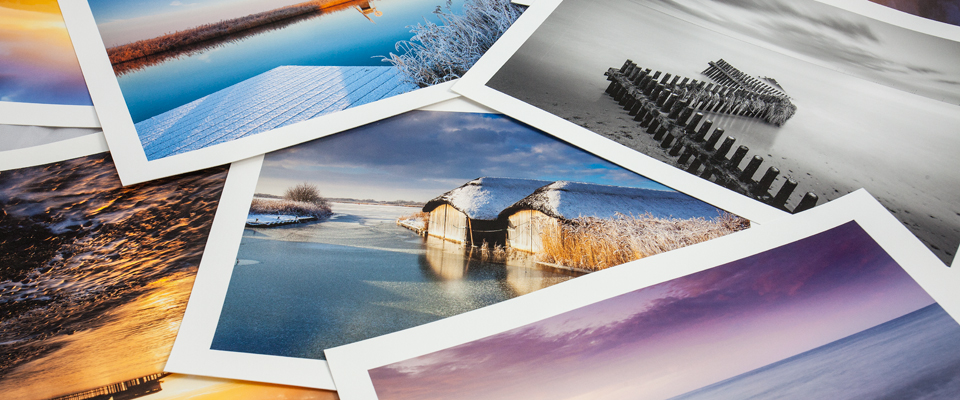
Make Yourself Stand Out by Offering Printing
Typical photographers offer only the digital version of their creations, leaving it up to you whether you want to print your photos or not. And the truth is, most of the times customers get inevitably disappointed later on when they print their beautiful memories themselves because in most cases they ruin them with too much grain and bad printing paper. So save them the heartbreak and make yourself stand out from the crowd of photographers by offering your printing services. Many people will turn to you especially for this reason. Keep in mind that most of the clients will want an impeccable large print of their portraits and wedding photos, so know that there are many quality large format printers specially designed for that matter. Moreover, many up-and-coming photographers looking to make an impact use large format printers for their first art exhibition to make their photos look as good as possible.
Constantly Work on Yourself
Never stop learning! If you want to invest in education, there are many renowned colleges of art and photography. Moreover, in the modern world of today, there are many online courses that can help you learn just what you need. And don’t stop there. Be constantly hungry for the latest developments in the photography industry. Engage yourself in constant experiments, discover your shooting style and philosophy and start learning more about that. It’s better to focus on one field like black and white or event photography and become a master at it, rather than trying to do everything at once and be average in everything. Definitely something worth considering.
Embrace Networking and Social Media Presence
Joining an existing photography business will enable you to work and learn along side experienced photographers. These people can show you how things are done and introduce you to different client bases. The right contacts are necessary for every business to thrive. Then, after you’ve gained the needed experience, you can open your own studio. My tip is to invest in high quality photography gear and not to spend much money on flyers and advertisements just to get the word out that you’re the new photographer in town. With the amazing possibilities of social media today, all you need is to invest some time in creating the perfect online ad. Your own Facebook page and an Instagram account are the best and fastest ways to promote yourself. Make sure you post quality material that is sure to be shared, and people will soon start flocking to you to make their special moments last forever.
Beyond Camera: Accessories Are Vital to Becoming a Pro Photographer
“The most powerful weapon in the world, as far as I’m concerned, is the camera.”
This quote can make you see some things from a certain perspective. Get it? Professional photographers create better photos not by having the most expensive cameras and accessories at their disposal, but because they know how to perfectly capture a moment.
However, this does not mean that you can produce a quality image with a cheap camera. And furthermore, you’d be able to put more life in your images by having the right accessories. You might have the eye to spot a unique moment, or set a great scene for imagery, but you’ll need to arm yourself with a decent DSLR camera, preferably with double digit megapixels and a decent sensor size. And with the internet at your disposal and the number of shops that sell cameras and camera accessories in Australia, you’ll have plenty of choices to pick from.
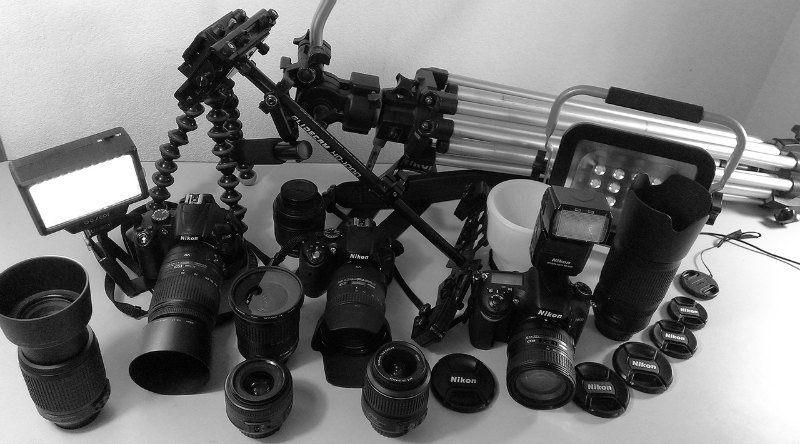
You probably wouldn’t want to over-do it on your initial purchase. If you don’t own a camera already, buying one along with few other pieces of the most essential equipment will be sufficient enough to create quality photos.
Remember, “You don’t take a photograph, you make it.” It is you who is in control. Hence, pay attention to things like lighting and composition. Also, positioning yourself at the right angle is key to making outstanding photos. Still, the power of the lens is what can make or break a photograph; it’s what it takes to leave a viewer in awe or unimpressed. Even though lenses are top-sold camera accessories in Australia, the lens’ spec sheet leaves many (particularly those new to photography) a bit confused. In short, here’s what those numbers represent:
- the focal length (defines the lens’ angle of view)
- the aperture (describes how much light it can gather)
- the format (sensor size it’s designed to work with)
- the mount (whether or not it can physically fit on your camera)
- the image stabilization (optical stabilization for minimizing or ignoring blurring effects of hand shaking)
The key is making sure the lens physically fits into your camera. And again, you don’t have to buy all the different kinds of lenses as you will most likely end up not using all of them. Buy a few, or just rent them. Renting camera accessories and gear is a smart way to try out the equipment without actually buying it, which is something a lot of photographers (newbies and pros as well) take advantage of.
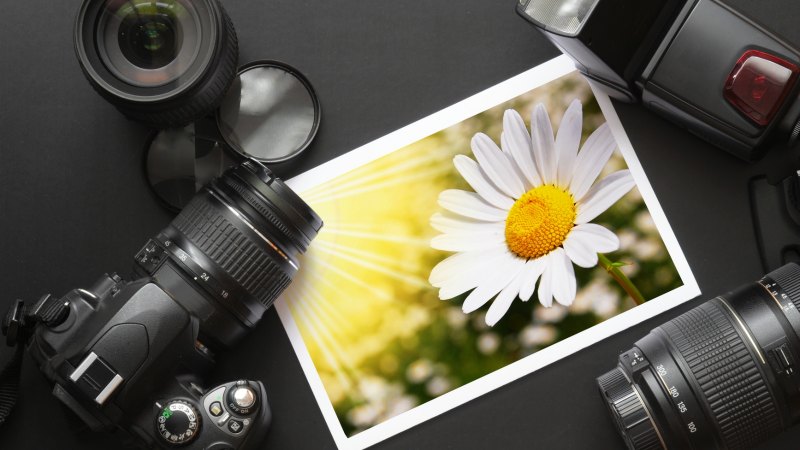
Besides lens, there are other accessories designed to make ‘taking great photos’ much easier. An extra set of battery will ensure you don’t run out of power in a crucial moment, for example. An SSD card will increase your storage capacity, allowing you to experiment and take as much photos as you want without deleting most of them in concern for not having enough space.
Bottom line is, when shopping for camera equipment, you have to pay attention to many things – specifications, compatibility, price, etc. The right gear however, is your one way ticket to making incredible shots. Broaden your horizons to reach beyond the unreachable!
Top Reasons Camera Equipment Rental Is More Cost-Effective Than Buying New Gear
If you are searching the market for a new camera, you know that choosing the right equipment can be an overwhelming process. Investing in a quality one can be pricey, so you want to make sure you are getting exactly what you want and need. That is where camera equipment rental comes in handy.
This trend is becoming more and more popular as photographers realize the convenience and cost savings of renting instead of buying all the equipment they need. If you haven’t given renting a try, here are a few reasons to get you convinced that camera equipment rental may be a great option for your needs and requirements.
A Chance to Try High-End Gear at Affordable Prices
Investing in high-quality lens for wedding and portrait photographers may cost you up to $2,000. Renting the same quality lens will cost you less than $100 for a couple of days rental. That means you would need to rent the lens for 20 times or more before you would have bought one. So, if you need a certain type of lens that you will use only for certain occasions, renting them may be more cost-effective than purchasing.
Affordable Way of Having Backup Equipment
When shooting a wedding or any other important event, it is quite important to have extra equipment in case something goes wrong with your main gear. Getting an extra camera for a weekend will only cost you a few bucks, which is a pretty cheap way to ensure you have the equipment you need to keep your customers happy.
Try Before You Buy
There are some things that no one should buy without trying them out first such as cars, computers and cameras. It is quite common to see photographers investing in small mirrorless cameras as their street photography camera or travel camera. With the wide variety of cameras available out there, it is wise to rent a certain model for a while before spending a great amount of money on it.
Many Options of Lighting Gear
Whether it is a few Einstein monolights or a bag of speedlites, the truth is, investing in lighting gear can be quite expensive. Therefore, instead of spending hundreds of dollars on a few monolights, you can rent them for about $50 for a weekend. So, if you don’t need big lights most of the time, renting them is a viable option.
Save from Shipping Gear While Traveling
If you have traveled before with your photography equipment, you know how big of a pain in the neck it is having to pack all your gear and travel with it. Plus, buying quality shipping cases is quite expensive and using a regular camera bag does not provide the right protection and security for your gear. Renting some of the equipment required may be a cost-effective and much more convenient solution here.
Australian Camera Stores Offer The Essentials For Equipping Your Own Studio
I’ve had this idea in my mind for so long and I’ve never had the courage to actually bring it to reality, but I have a photography studio now! It’s not a small deal, and if you want to have one, you should have in mind that it’s quite the action that costs money, time and effort. I started small though, I wanted to get the essentials first and step by step buy the rest of the equipment and with that to become the type of photographer that can do portfolios for people. I’m fully devoted to that goal and I must say that besides making a thorough research online, an important part of the whole evolution of the job process involves visiting Australian camera stores to see how the technological aspect develops.
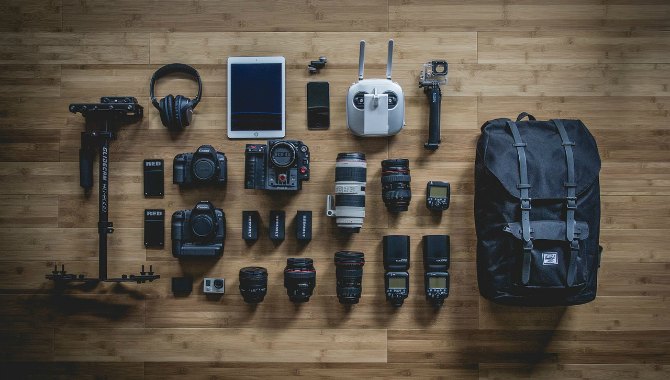
With such vast offer of products, one could really get confused and disappointed and just give up. That’s why I am here; I went through the entire experience, and I know what you need to buy first in order to start with your studio. The first thing you need to do is to of course find well-equipped Australian camera stores and then make your list of ‘things to buy’ to start your shopping hunt.
A Backdrop
The backdrop is the background you’ll be taking the photos on. It’s something similar to a wallpaper and comes in a roll of paper. You can choose the size and colour, as it can be found at all possible options. An alternative to the paper could be a piece of cloth, like velvet or similar, which is always a good idea.

The Camera
Obviously, this is your most important piece of equipment. Now, for a professional photography studio, you’d need a really good camera, and the choice of one really depends on various factors such as what will you be shooting, will you limit your work only in the studio, will you offer your favours to companies, and similar things to consider. The important thing not to forget here, is that your camera should be wired to the studio lights which means you need to get sync cables. Normally, don’t forget about choosing quality lenses and other accompanying gear for the camera as a separate piece of equipment.
Main Lights
For starters, you’d benefit largely from a softbox here. This is a diffuser, and as such it softens the light and makes the shadows less harsh, giving window-shaped catchlights in the eyes. You should also pay attention to the height, distance and angle of the main light so you acquire the light you want. The flash should be strong enough and most importantly, it should be controlled easily, like through a button on the flash head.
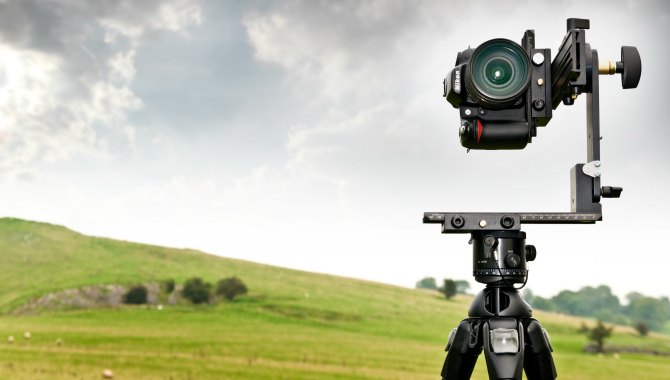
Reflector
At the beginning, light will be your most important issue, as you want to know how to master this issue really well so you get awesome photos. The reflector is used to bounce the light back from the main light and direct it towards the shaded side of the subject’s face. The point of this is to still have a shadow but make sure it’s not too dark.
All in all, besides the proper location and some basic logistical features, these would be your most important elements so you can start working in your studio. Of course you’ll need to upgrade it as time passes by and you’re financially capable to do so. Do your magic.




